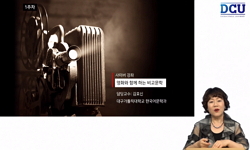본 연구는 도덕성 분석을 통해 절제교육 방안을 탐색해 보고자 하였다. 이를 위해 동양에서는 공자와 정약용을 서양의 경우는 아리스토텔레스와 칸트를 그 대상으로 삼았고, 공자의 경우는 ...
http://chineseinput.net/에서 pinyin(병음)방식으로 중국어를 변환할 수 있습니다.
변환된 중국어를 복사하여 사용하시면 됩니다.
- 中文 을 입력하시려면 zhongwen을 입력하시고 space를누르시면됩니다.
- 北京 을 입력하시려면 beijing을 입력하시고 space를 누르시면 됩니다.
https://www.riss.kr/link?id=A82728063
- 저자
- 발행기관
- 학술지명
- 권호사항
-
발행연도
2008
-
작성언어
Korean
-
주제어
도덕성 ; 인 ; 중용의 덕 ; 사덕 ; 정언명법 ; 절제 ; 상 ; 벌 ; 기준설정 ; 비교 ; 자기평가 ; morality ; benevolence ; the virtue of mean ; four virtue ; categorical imperative ; temperance ; praise ; punishment
-
KDC
190.7
-
등재정보
KCI등재후보
-
자료형태
학술저널
-
수록면
285-306(22쪽)
-
KCI 피인용횟수
1
- 제공처
-
0
상세조회 -
0
다운로드
부가정보
국문 초록 (Abstract)
본 연구는 도덕성 분석을 통해 절제교육 방안을 탐색해 보고자 하였다. 이를 위해 동양에서는 공자와 정약용을 서양의 경우는 아리스토텔레스와 칸트를 그 대상으로 삼았고, 공자의 경우는 인(仁)을, 정약용은 사덕(四德)을, 아리스토텔레스는 중용의 덕을, 칸트는 정언명법을 도덕성으로 보고 분석하였다. 그 결과 각각의 도덕성은 서로 그 내용과 성격은 다르지만 모두 절제와 관련이 있다는 것을 확인 할 수 있었다. 문제는 절제능력의 형성인데, 절제능력을 길러주는 방법은 다양하고 많다. 하지만 여기서는 강화, 즉 상과 벌에 주목해 보았다. 그 이유는 강화로서의 상과 벌은 행위의 기준설정에 중요한 역할을 할뿐만 아니라 절제능력을 형성할 수 있는 다른 방법인 모델링, 격리, 설득 등과 병행하여 사용할 경우 그 효과를 극대화 할 수 있다는 점에서 그 의미가 적다고 할 수 없기 때문이다. 결국, 도덕교육이 도덕성을 함양, 확충하는 것이라면, 우리는 도덕성과 공통적으로 관계하는 절 제능력의 형성을 생각하지 않을 수 없고, 게다가 절제능력의 형성이 상, 벌과 밀접한 관련이 있다면, 우리는 도덕교육 방법으로 상과 벌에 주목하지 않을 수 없게 된다.
다국어 초록 (Multilingual Abstract)
This study is trying to find what temperance education is the most effective through analyzing morality. For this study, Confucius and Jung yak-yong in the Orient are adopted as a target, Aristoteles and Kant in the West are also adopted. The analyzin...
This study is trying to find what temperance education is the most effective through analyzing morality. For this study, Confucius and Jung yak-yong in the Orient are adopted as a target, Aristoteles and Kant in the West are also adopted. The analyzing is performed on the premise that Confucius`s morality is based on benevolence, Jung yak-yong`s morality is based on four virtues, Aristoteles` morality is based on the virtue of mean, and Kant`s morality is based on categorical imperative. Through the analyzing, even though each morality has different contents or types, it is made firm that each morality is premised on temperance. The solution consists in forming temperance ability, and there can be various ways of building up temperance ability, but the most effective way is to praise or punishment. Because both praise and punishment do a primary role in establishing the standard of a moral behavior and When praise and punishment go side by side with modeling, isolation and reasoning which are another ways to help build up temperance ability, they are very significant as moral education method in view of being able to maximize the effect. In short, if moral education is to cultivate or to expand morality, to form temperance ability is needed. and as temperance ability is built up by praise or punishment in general, we cannot help paying attention to both praise and punishment as moral education method.
참고문헌 (Reference)
1 설영한, "프로이트 심리학 해설" 선영사 1995
2 David G. Perry, "인간의 사회적 발달" 성원사 1993
3 L. A. Hjelle, "성격심리학" 법문사 1991
4 송석재, "반두라의 자기조절의 도덕교육" 한국학술정보 2006
5 강영안, "도덕은 무엇으로부터 오는가" 소나무 2000
6 丁若鏞, "다산과 문산의 인성논쟁" 한길사 1997
7 Aristoteles, "니코마코스 윤리학" 서광사 1985
8 서울대학교사범대학국정도서편찬위원회, "고등학교 도덕 교사용지도서" 지학사 2005
9 張基槿, "論語" 명문당 1996
10 丁若鏞, "茶山孟子要義" 현대실학사 1994
1 설영한, "프로이트 심리학 해설" 선영사 1995
2 David G. Perry, "인간의 사회적 발달" 성원사 1993
3 L. A. Hjelle, "성격심리학" 법문사 1991
4 송석재, "반두라의 자기조절의 도덕교육" 한국학술정보 2006
5 강영안, "도덕은 무엇으로부터 오는가" 소나무 2000
6 丁若鏞, "다산과 문산의 인성논쟁" 한길사 1997
7 Aristoteles, "니코마코스 윤리학" 서광사 1985
8 서울대학교사범대학국정도서편찬위원회, "고등학교 도덕 교사용지도서" 지학사 2005
9 張基槿, "論語" 명문당 1996
10 丁若鏞, "茶山孟子要義" 현대실학사 1994
11 James Q. Wilson, "The Moral Sense" Free Press Paperback 1993
12 A. Bandura, "Social Foundation of Thought and Action" Prentice-Hall, Inc. 1986
13 A. Bandura, "Self-Efficacy: The Exercise of Control" W. H. Freeman and Company 1997
14 A. Bandura, "Psychological Modeling: Conflicting Theories" Aldine Atherton, Inc. 1971
15 H. Hartman, "Note on the Superego" International University Press, Inc. 1964
16 Thomas C. Hunt, "Moral Educaion America's Schools: The Contuning Challenge" Informaion Age Publishing Inc. 2005
17 Kant, "Fundamental Principles of the Metaphysic of Morals, Great Books of the Western World" Encyclopedia Britannica 1952
18 A. Bandura, "Aggression" Prentice Hall, Inc. 1973
동일학술지(권/호) 다른 논문
-
- 한국윤리교육학회
- 박병기 ( Byung Kee Pak )
- 2008
- KCI등재후보
-
- 한국윤리교육학회
- 배한동
- 2008
- KCI등재후보
-
- 한국윤리교육학회
- 김순자 ( Soon Ja Kim )
- 2008
- KCI등재후보
-
- 한국윤리교육학회
- 박형빈 ( Hyoung Bin Park )
- 2008
- KCI등재후보
분석정보
인용정보 인용지수 설명보기
학술지 이력
| 연월일 | 이력구분 | 이력상세 | 등재구분 |
|---|---|---|---|
| 2022 | 평가예정 | 재인증평가 신청대상 (재인증) | |
| 2019-01-01 | 평가 | 등재학술지 유지 (계속평가) |  |
| 2016-01-01 | 평가 | 등재학술지 유지 (계속평가) |  |
| 2012-01-01 | 평가 | 등재학술지 유지 (등재유지) |  |
| 2009-01-01 | 평가 | 등재학술지 선정 (등재후보2차) |  |
| 2008-01-01 | 평가 | 등재후보 1차 PASS (등재후보1차) |  |
| 2007-01-01 | 평가 | 등재후보학술지 유지 (등재후보2차) |  |
| 2006-01-01 | 평가 | 등재후보 1차 PASS (등재후보1차) |  |
| 2005-10-07 | 학술지등록 | 한글명 : 윤리교육연구외국어명 : Journal of Ethics Education Studies |  |
| 2004-01-01 | 평가 | 등재후보학술지 선정 (신규평가) |  |
학술지 인용정보
| 기준연도 | WOS-KCI 통합IF(2년) | KCIF(2년) | KCIF(3년) |
|---|---|---|---|
| 2016 | 1.39 | 1.39 | 1.25 |
| KCIF(4년) | KCIF(5년) | 중심성지수(3년) | 즉시성지수 |
| 1.14 | 1.06 | 1.679 | 1 |





 eArticle
eArticle






